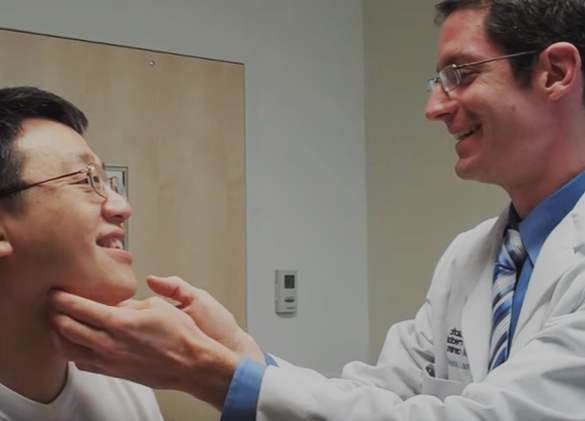Watch how Seattle rhinoplasty surgeon Dr. Thomas Lamperti was able to combine neck liposuction with rhinoplasty to correct a patient's pollybeak deformity, excessive columellar show and hanging columella.
In my last post I discussed how we can use liposuction to remove excessive neck fat. The case study patient I showed also had a concurrent rhinoplasty to treat her pollybeak deformity, excessive columellar show and hanging columella. Today we'll go over that aspect of the patient's surgery.
Addressing a hanging columella and excessive columellar show
Here's a before and after photo of our patient where you can see the excessive columella show that results from a hanging columella.
There are several possible causes of a pollybeak deformity and hanging columella. Especially in previously un-operated noses like this patient, an overgrown septum is a common cause.

The above schematic shows you how the septum can overgrow in an upward direction thereby creating excess supra-tip fullness (pollybeak). It also shows how the septum can also overgrow in a forward direction which ends up pushing the columella along with it. This leads to excessive columellar show as too much of the nostrils become visible.
Fixing a pollybeak deformity
So how can we fix this problem? In this patient I addressed the supra tip fullness and pollybeak deformity using an open rhinoplasty approach. This allowed me to trim the excess septal cartilage and create a more refined bridge.
Fixing a hanging columella
There are a few ways of treating a hanging columella. I prefer using a tongue in groove setback technique which involves freeing up the medial crural cartilages that make up the columella and then repositioning them back onto the septum itself. The medial cartilages are then sutured to the septum which creates an extremely durable, stable result. This step also allows me to precisely set the proper tip projection. In this patient's case, her tip was underprojected which further accentuated her pollybeak deformity. By increasing the projection of the tip even less of the bridge cartilage needed to be trimmed to fully treat the pollybeak deformity.
Let's see how these maneuvers helped our case study patient:

Can you see how the patient's rounded, amorphous tip is now more elegant and refined? Also, notice how the excessive columellar show is now corrected making her nose fit more seamlessly with the rest of her face.


